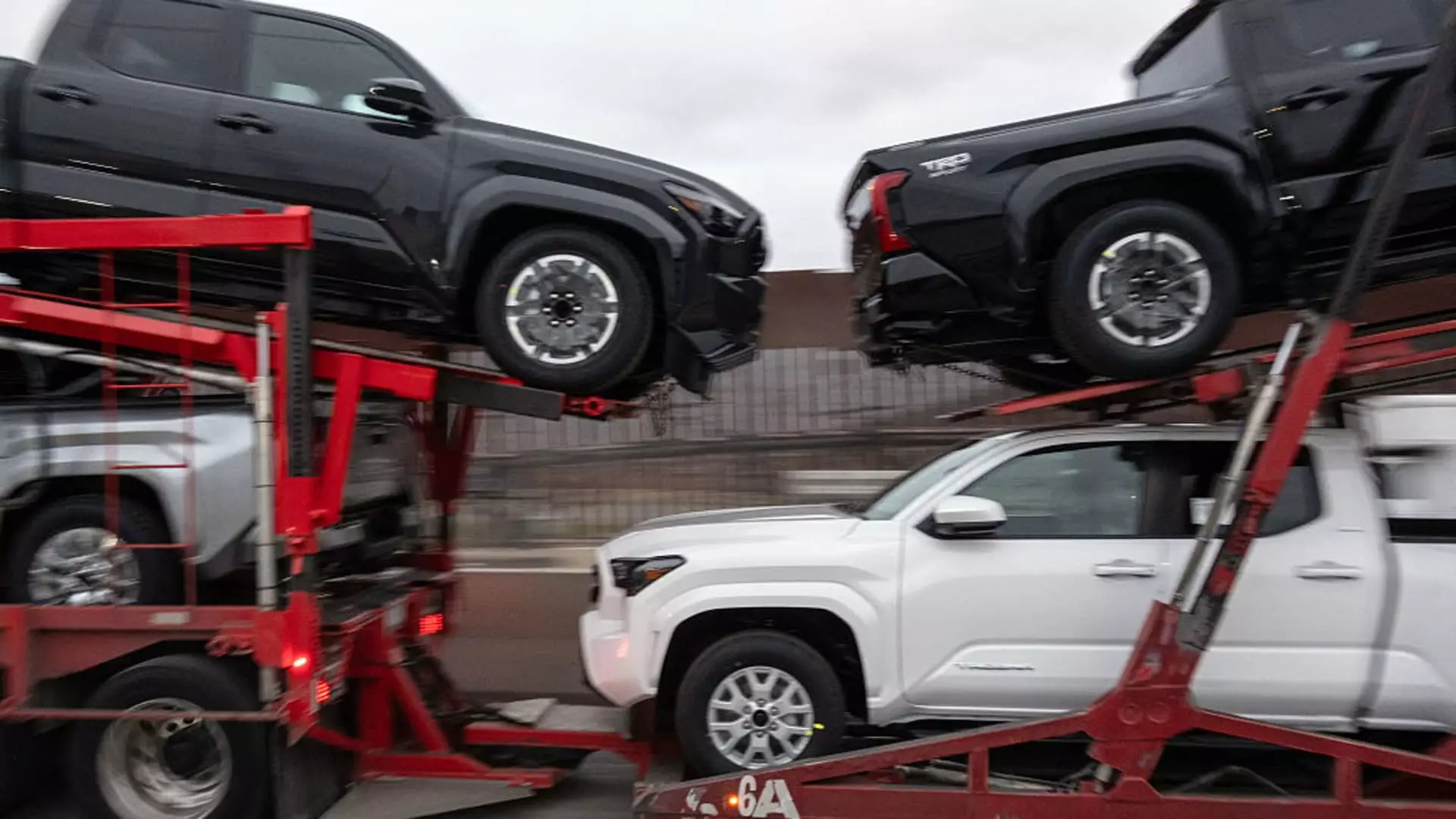In a market already teetering on the edge, President Donald Trump’s latest comments regarding automotive tariffs have generated substantial ripples. When Trump suggested during a meeting that he wants to “help some of the car companies” amid the recently imposed 25% tariffs, many interpreted this as a frantic attempt to stave off an emerging disaster. His vague promises of assistance for automakers transitioning their production back to U.S. soil may sound reassuring at first glance, but they evoke a troubling sense of uncertainty about the future strategies of both the companies and their workforce.
Tariffs are a two-edged sword; while they aim to defend domestic industries from foreign competition, they inevitably raise costs for consumers and complicate supply chain dynamics. The automotive sector is a prime example where the balance between protectionist policies and market stability is precarious. The president’s intention to provide “a little bit of time” for companies to adjust feels like little more than a half-hearted acknowledgment of the tough landscape they are operating within.
Stock Fluctuations and Speculative Gains
After Trump’s comments, we saw a remarkable increase in the stock shares of major automakers like Ford, GM, and Stellantis, climbing between 3% and 6%. This maddening volatility raises questions about the speculative nature of such market reactions. What are investors really betting on here? Is it the potential for future support from the government, or simply the excitement of a reactive market influenced by presidential pronouncements? Such a situation can reveal an unsettling truth: investors might be more captivated by headlines than fundamentals.
Add to that the bewildering rise of companies like Rivian and Tesla and the overall atmosphere becomes almost surreal. While these stock movements might seem encouraging, especially for business leaders who thrive on optimism, the underlying volatility screams of an industry that is far from stable. This perpetual cycle of highs and lows, driven not by sales or new innovations but by the whims of political expediency, is a dangerous game that could erode long-term investor confidence.
The Broader Implications of Tariffs
The industry’s responses to the tariffs highlight a troubling dichotomy. On one side, we have traditional manufacturers like Ford and Chrysler striving to navigate these murky waters by engaging in employee pricing deals and ramping up domestic production. It’s a valiant effort to keep their workforce engaged and motivated, but one can’t help but wonder: what growth trajectory can a company realistically expect in such an unstable environment?
On the other hand, brands like Jaguar Land Rover have taken a more drastic step, halting U.S. shipments entirely in response to Trump’s tariffs. This is alarming and illustrates the broader implications of the tariffs—a chilling effect that could diminish the industry’s global competitiveness. Companies forced to reassess their market strategies based on the unpredictable whims of policy risk losing not just profits, but trust among their customers.
Consumer Concerns and Real Economic Impact
With companies like Hyundai asserting they will not raise prices, the question of consumer trust looms larger than ever. Will consumers bite the bullet and accept inflated prices in the long run? The answer may not be as simple as one would think. While there may be temporary assurance from automakers concerning pricing, consumers are increasingly aware of the broader economic tactics at play, such as tariff-induced price hikes.
As companies reassess their production plans in light of the stated tariffs, the ecological implications cannot be ignored either. With the automotive industry gradually shifting towards more sustainable practices, the transition phase has been disrupted by policy. The inconsistency in federal support undermines these valuable moves towards innovation and environmental stewardship, forcing companies to prioritize short-term survival over long-term sustainability.
Understanding the current landscape demands an acknowledgment that an economic “tornado” does not leave the landscape unchanged. As traditional strategies falter under political unpredictability, the automotive industry stands at a crossroads. It must decide whether to hunker down for the storm or break free of the temporal dictates and chart a new course.

